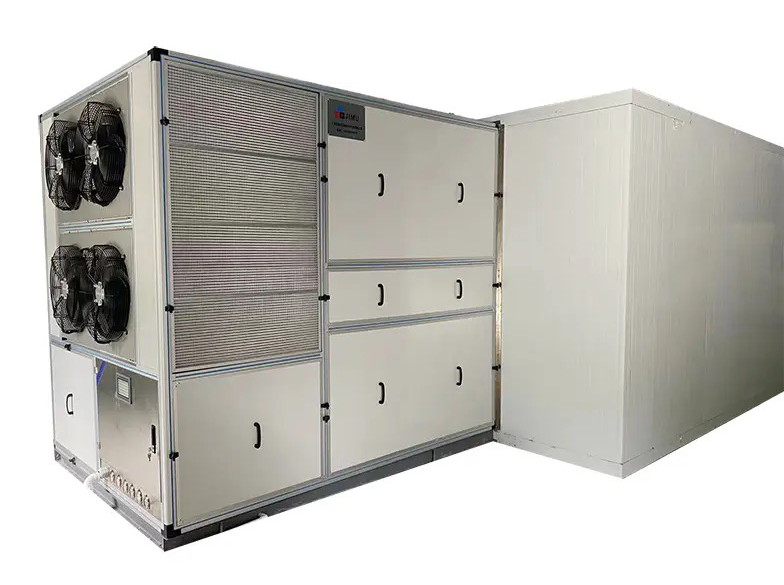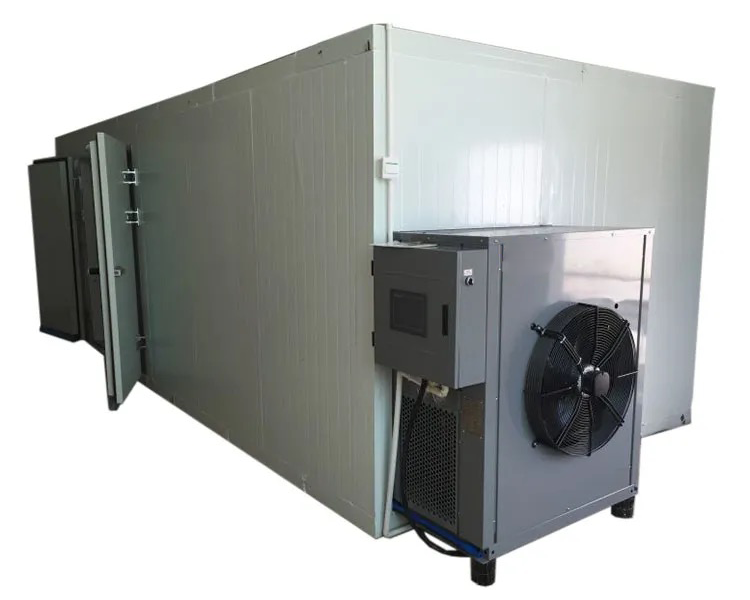
Content Menu
● Introduction
● Understanding Food Drying Machines
>> Traditional Dryers
>> Condenser Dryers with Heat Pumps
● How Does a Condenser Dryer with Heat Pump Work?
>> Mechanism of Operation
>> Advantages of Heat Pump Technology
● Comparison Table: Condenser Dryer with Heat Pump vs. Traditional Dryer
● Applications of Food Drying Machines
● Key Considerations When Choosing a Food Drying Machine
● Innovations in Food Drying Technology
● Challenges Facing Food Drying Technologies
● Conclusion
● FAQ
>> 1. What are the main benefits of using a condenser dryer with heat pump technology?
>> 2. Can heat pump dryers be used for all types of food?
>> 3. How do I maintain a condenser dryer with heat pump?
>> 4. Are there any downsides to using a heat pump dryer?
>> 5. How does the drying time compare between traditional dryers and heat pump dryers?
Introduction
In the realm of food preservation, drying is one of the oldest and most effective methods. As a leading manufacturer of food drying machines in China, we aim to provide insights into the various technologies available, particularly focusing on condenser dryers with heat pumps compared to traditional dryers. This article will delve into the mechanics, efficiency, and benefits of these drying technologies while ensuring a comprehensive understanding for brands, wholesalers, and manufacturers in the food industry.

Understanding Food Drying Machines
Food drying machines are essential tools for removing moisture from food products, thereby extending their shelf life and enhancing flavor concentration. There are various types of drying machines available in the market, but two prominent categories are traditional dryers and condenser dryers with heat pumps.
Traditional Dryers
Traditional dryers typically use direct heat sources such as gas or electric heating elements. These machines can be efficient but often suffer from several drawbacks:
- High Energy Consumption: Traditional dryers consume a significant amount of energy, leading to higher operational costs.
- Uneven Drying: Due to their design, traditional dryers may not distribute heat evenly, resulting in inconsistent drying.
- Environmental Impact: The high energy consumption also translates to a larger carbon footprint.
- Quality Degradation: The high temperatures used can degrade the quality of some sensitive foods, impacting both taste and nutritional value.
Condenser Dryers with Heat Pumps
In contrast, condenser dryers with heat pumps represent a more modern approach to food drying. These machines utilize advanced technology to improve efficiency and sustainability.
- Energy Efficiency: Heat pump technology allows these dryers to recycle heat, making them significantly more energy-efficient than traditional models.
- Gentle Drying Process: The lower temperatures used in heat pump dryers help preserve the nutritional quality and flavor of the food.
- Reduced Environmental Impact: By using less energy, these machines contribute to a smaller environmental footprint.
- Cost Savings Over Time: Although the initial investment may be higher, the operational savings from reduced energy consumption can lead to lower overall costs.
How Does a Condenser Dryer with Heat Pump Work?
To fully appreciate the advantages of condenser dryers with heat pumps, it is essential to understand how they operate.
Mechanism of Operation
1. Air Circulation: The machine draws in air from the surrounding environment.
2. Heat Exchange: The air passes through an evaporator where it absorbs moisture from the food. This process cools the air down.
3. Condensation: The moisture-laden air is then passed through a condenser where it releases its moisture as water, which is collected in a tank or drained away.
4. Recycling Heat: The cooled air is reheated using the heat generated during condensation and recirculated back into the drying chamber.
5. Temperature Control: Advanced models feature sophisticated temperature control systems that ensure optimal conditions for different types of food products.

Advantages of Heat Pump Technology
- Lower Operating Temperatures: This allows for better preservation of sensitive nutrients and flavors in food products.
- Humidity Control: The ability to control humidity levels ensures that food dries evenly without becoming overly dry or retaining excess moisture.
- Versatility: Heat pump dryers can be used for various types of food products, including fruits, vegetables, herbs, and meats.
- User-Friendly Features: Many modern heat pump dryers come equipped with digital displays and programmable settings that make them easy to operate and monitor.
Comparison Table: Condenser Dryer with Heat Pump vs. Traditional Dryer
| Feature | Condenser Dryer with Heat Pump | Traditional Dryer |
| Energy Efficiency | High | Moderate to Low |
| Operating Temperature | Low | High |
| Moisture Removal | Effective and Controlled | Often Excessive |
| Environmental Impact | Low | High |
| Nutritional Preservation | Excellent | Variable |
| Cost of Operation | Lower | Higher |
| Maintenance | Generally Low | Can be High |
Applications of Food Drying Machines
Food drying machines have diverse applications across various sectors:
- Agriculture: Farmers use these machines to preserve surplus crops. For instance, excess fruits can be dried to create value-added products like dried apples or apricots.
- Food Processing: Manufacturers rely on drying processes to create snacks like dried fruits and jerky. This not only helps in preserving the product but also caters to consumer demand for healthy snack options.
- Retail: Grocery stores sell dried goods that require effective drying technology for quality assurance. Dried herbs and spices are particularly popular among consumers who prefer natural flavorings over artificial additives.
- Catering Services: Restaurants and catering businesses use food dehydrators to create unique dishes featuring dried ingredients that enhance flavors and presentation.
Key Considerations When Choosing a Food Drying Machine
When selecting a food drying machine for your business needs, consider the following factors:
- Capacity: Assess your production volume to determine the appropriate size of the dryer. Larger operations may require industrial-scale machines capable of handling significant quantities at once.
- Energy Efficiency Ratings: Look for models that offer high energy efficiency ratings to reduce operational costs. Many manufacturers provide detailed specifications regarding energy consumption per batch processed.
- Maintenance Requirements: Choose machines that are easy to maintain and service. Regular maintenance is crucial for ensuring longevity and consistent performance.
- Cost vs. Benefit Analysis: Evaluate initial investment against long-term savings from energy efficiency and product quality. While heat pump dryers may have higher upfront costs, their operational savings often justify the investment over time.
Innovations in Food Drying Technology
The field of food drying technology is continually evolving, with new innovations enhancing performance and efficiency:
- Smart Technology Integration: Many modern dryers come equipped with IoT capabilities that allow users to monitor and control their machines remotely via smartphone apps. This feature provides convenience and helps optimize drying processes based on real-time data analytics.
- Advanced Sensor Technology: Sensors can monitor humidity levels and adjust temperatures automatically during operation, ensuring optimal conditions for different types of foods without manual intervention.
- Eco-Friendly Designs: Newer models are designed with eco-friendly materials and processes in mind, further reducing their environmental impact while maintaining high performance standards.
Challenges Facing Food Drying Technologies
Despite advancements in technology, several challenges persist within the industry:
- Market Competition: With numerous manufacturers producing similar equipment, standing out requires continuous innovation and exceptional customer service.
- Consumer Education: Many consumers remain unaware of the benefits associated with using advanced drying technologies like heat pumps. Educating potential customers about these advantages is crucial for market growth.
- Regulatory Compliance: Food safety regulations vary by region; manufacturers must ensure their equipment meets all necessary standards to avoid legal issues and ensure product safety.
Conclusion
In conclusion, while both traditional dryers and condenser dryers with heat pumps serve the essential purpose of drying food products, they differ significantly in terms of efficiency, environmental impact, and product quality preservation. For businesses looking to invest in food drying technology, opting for a condenser dryer with heat pump technology offers numerous advantages that align with modern sustainability goals and consumer demands for high-quality food products.
By understanding these differences and considering the specific needs of your operation, you can make an informed decision that enhances your product offerings while minimizing costs and environmental impact. As technology continues to advance, staying informed about new developments will help you maintain a competitive edge in this evolving industry.

FAQ
1. What are the main benefits of using a condenser dryer with heat pump technology?
Condenser dryers with heat pump technology provide high energy efficiency, lower operating temperatures for better nutrient preservation, controlled moisture removal, and reduced environmental impact compared to traditional dryers.
2. Can heat pump dryers be used for all types of food?
Yes, heat pump dryers are versatile and can effectively dry various types of food products including fruits, vegetables, herbs, meats, and even dairy products.
3. How do I maintain a condenser dryer with heat pump?
Regular maintenance includes cleaning filters regularly, checking seals for wear and tear, ensuring proper airflow around the unit, and scheduling professional servicing as needed.
4. Are there any downsides to using a heat pump dryer?
While they are highly efficient, heat pump dryers typically have a higher initial purchase cost compared to traditional dryers. However, this cost is often offset by lower energy bills over time.
5. How does the drying time compare between traditional dryers and heat pump dryers?
Heat pump dryers generally take longer than traditional dryers due to their lower operating temperatures; however, this slower process can lead to better quality dried products.











